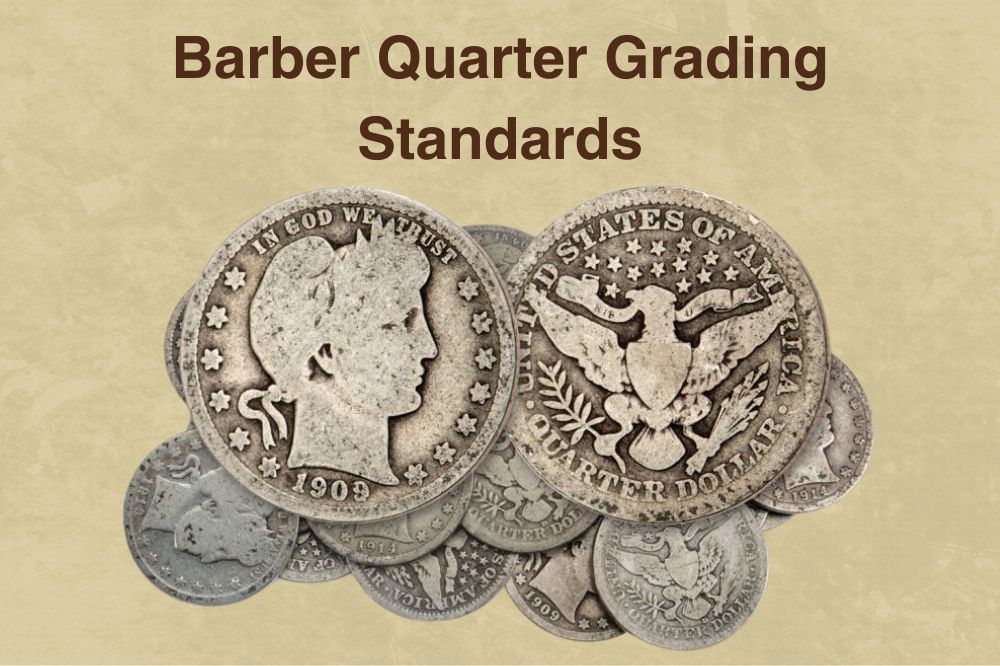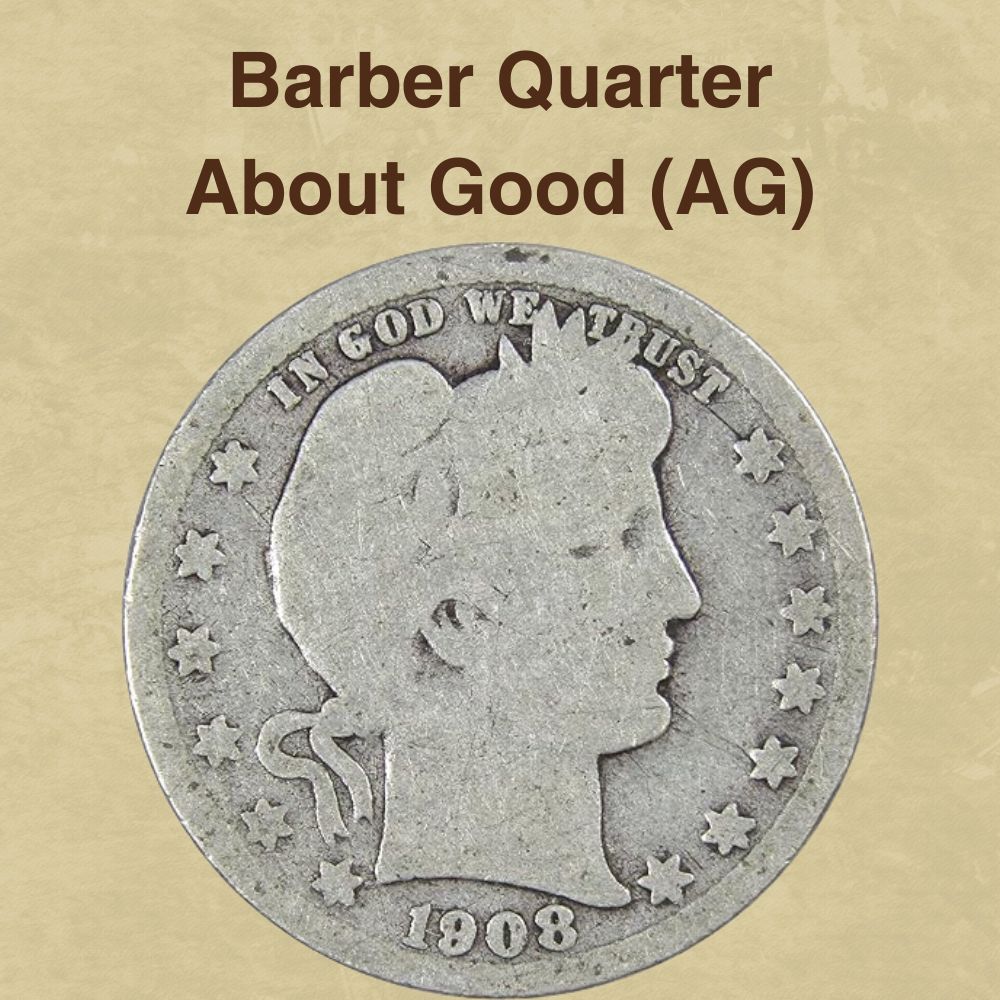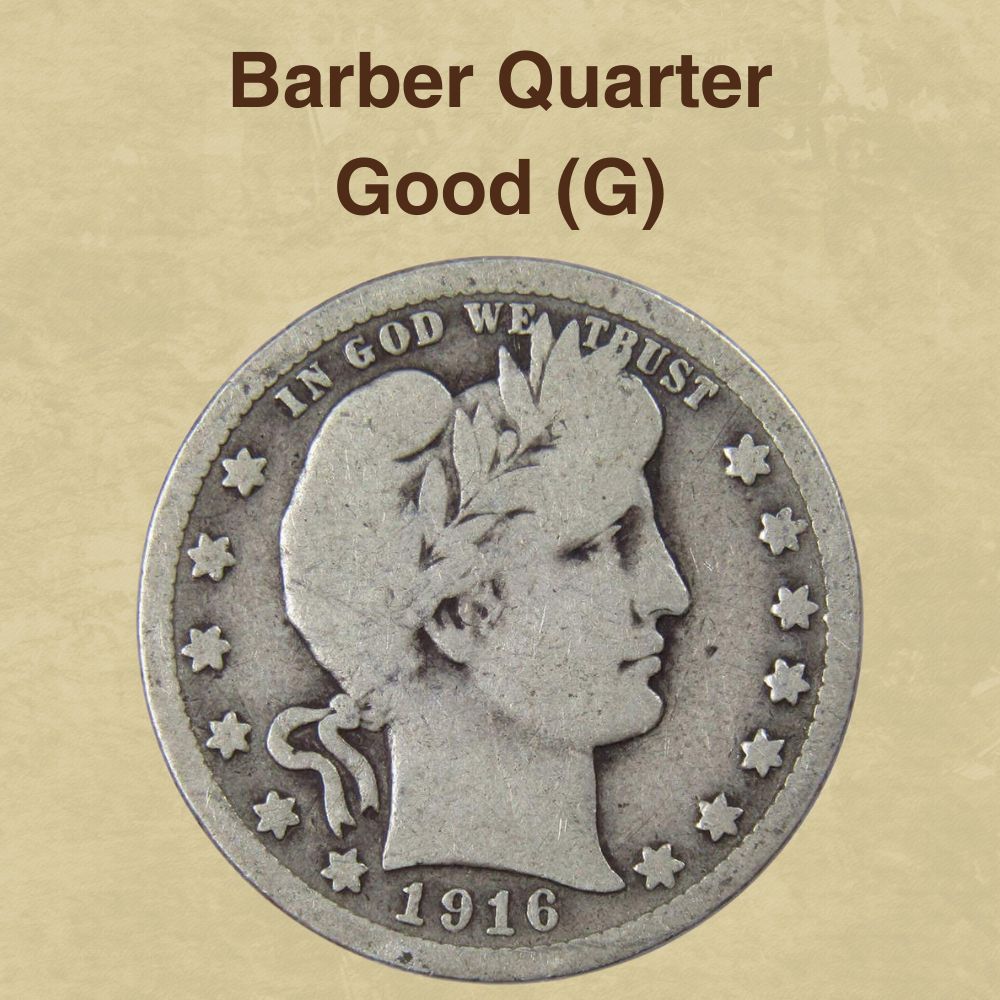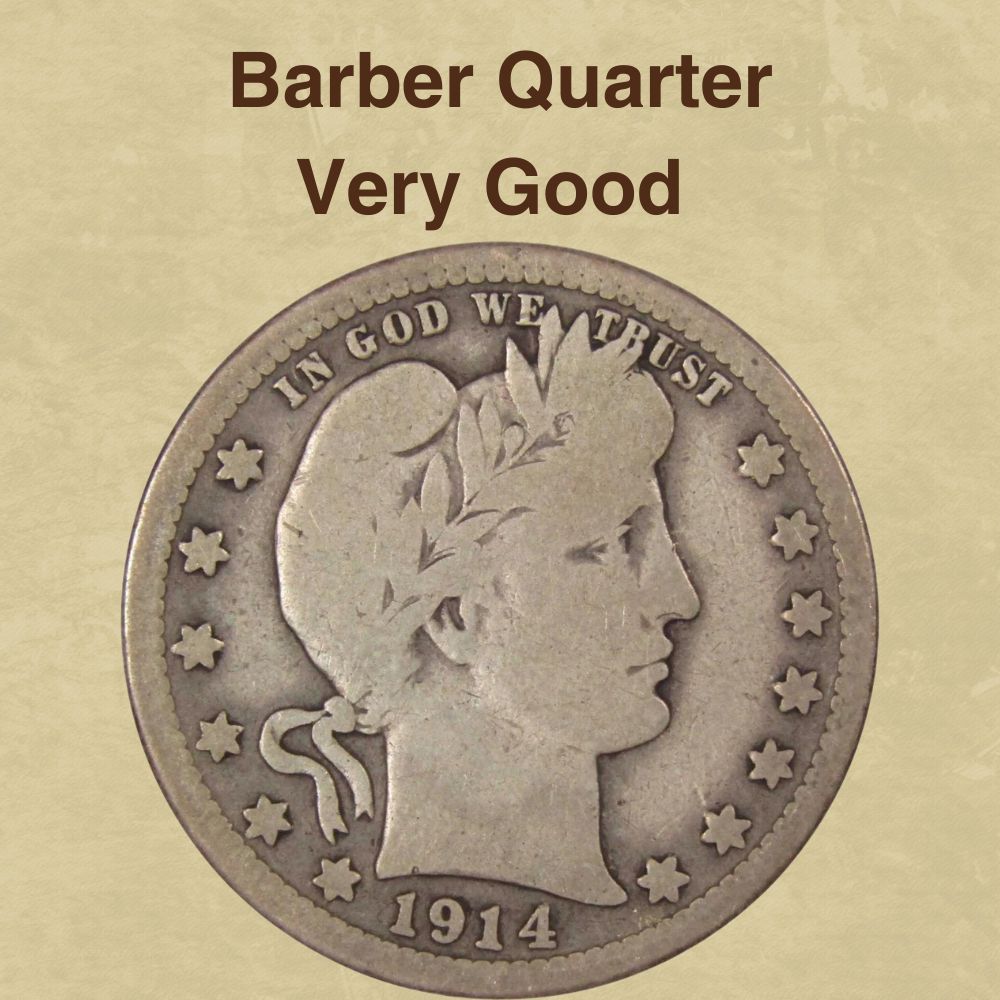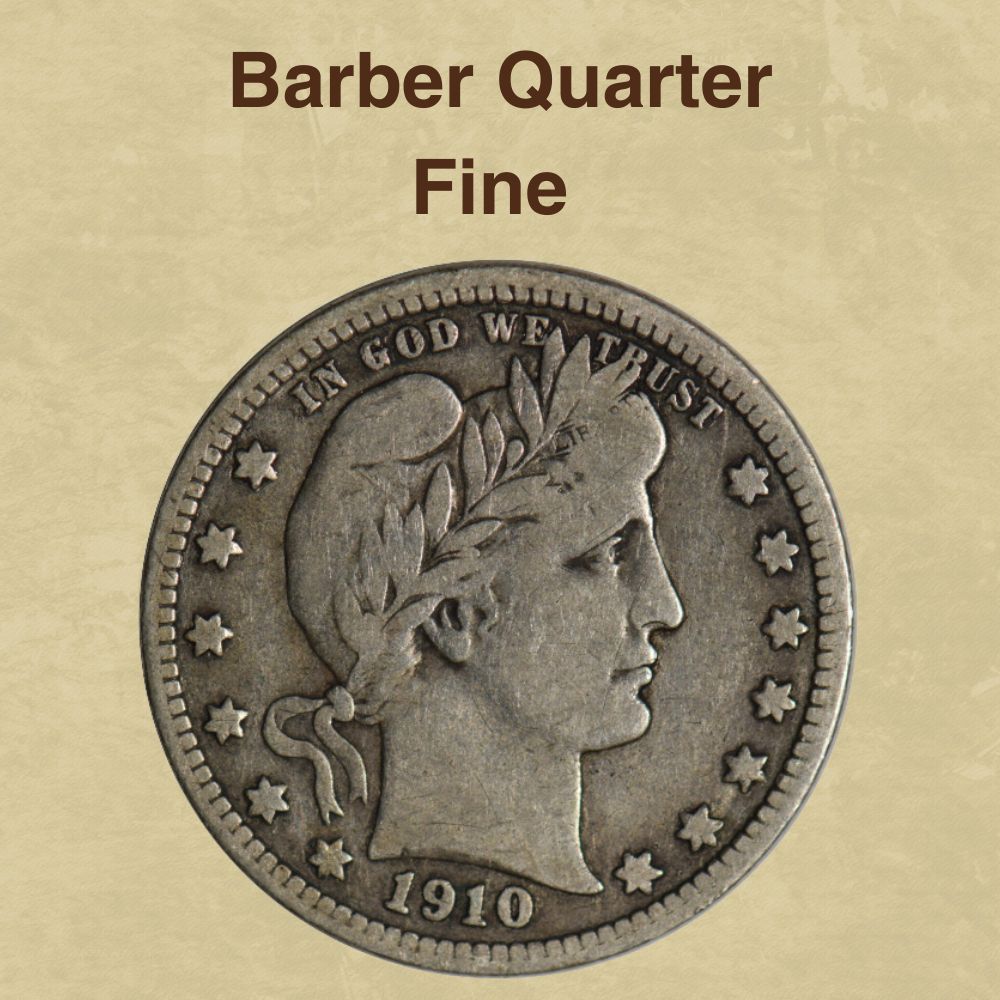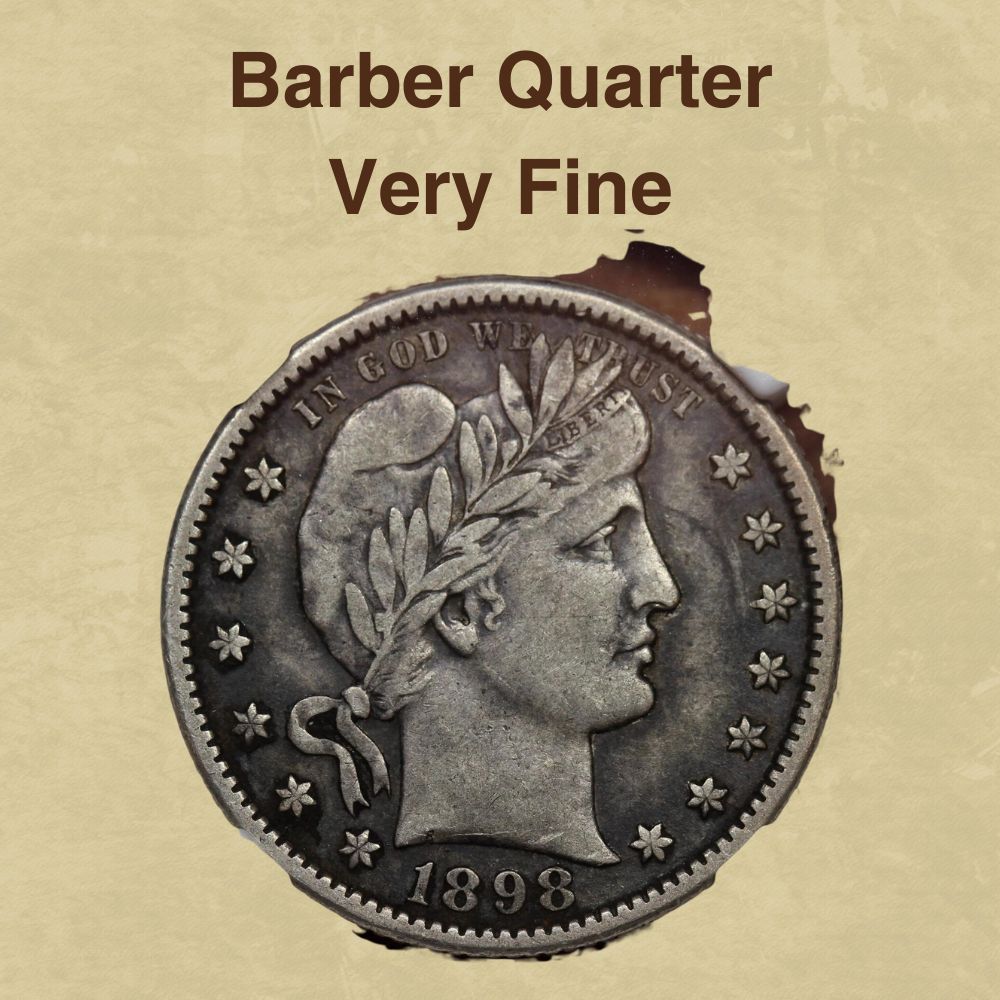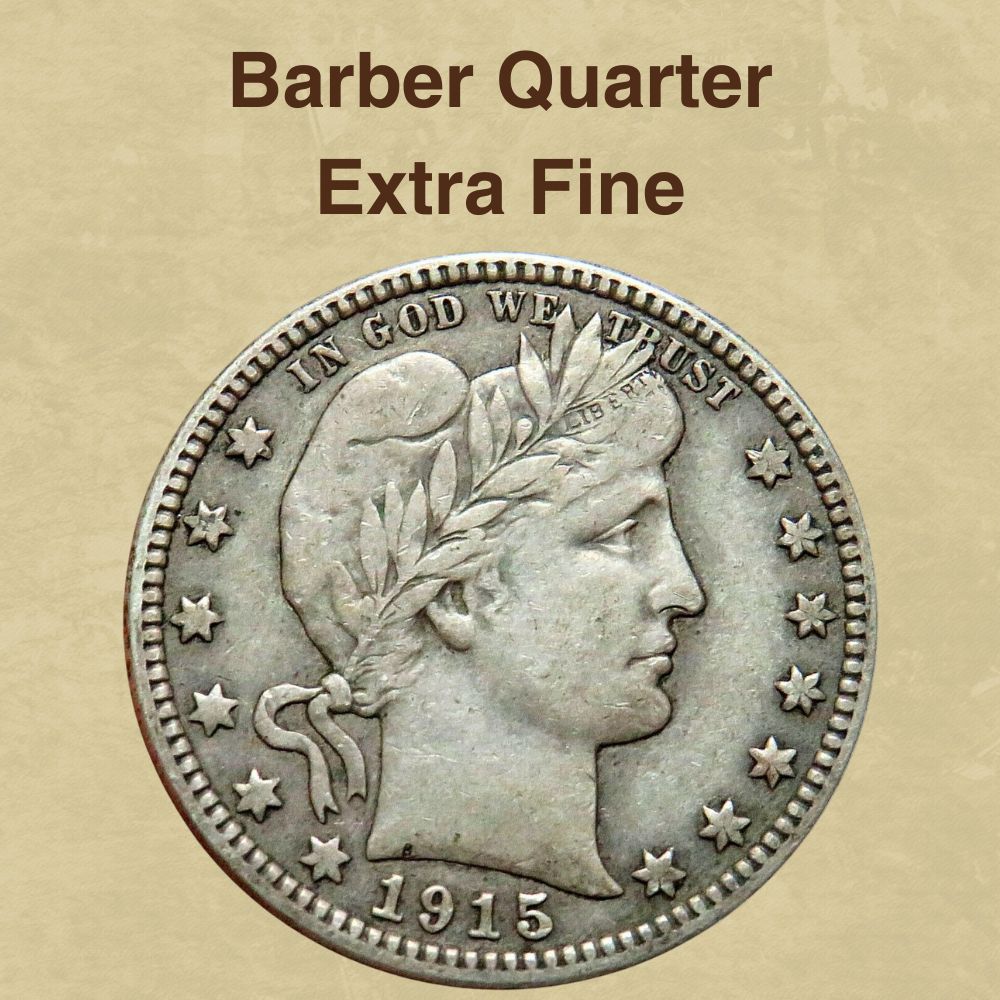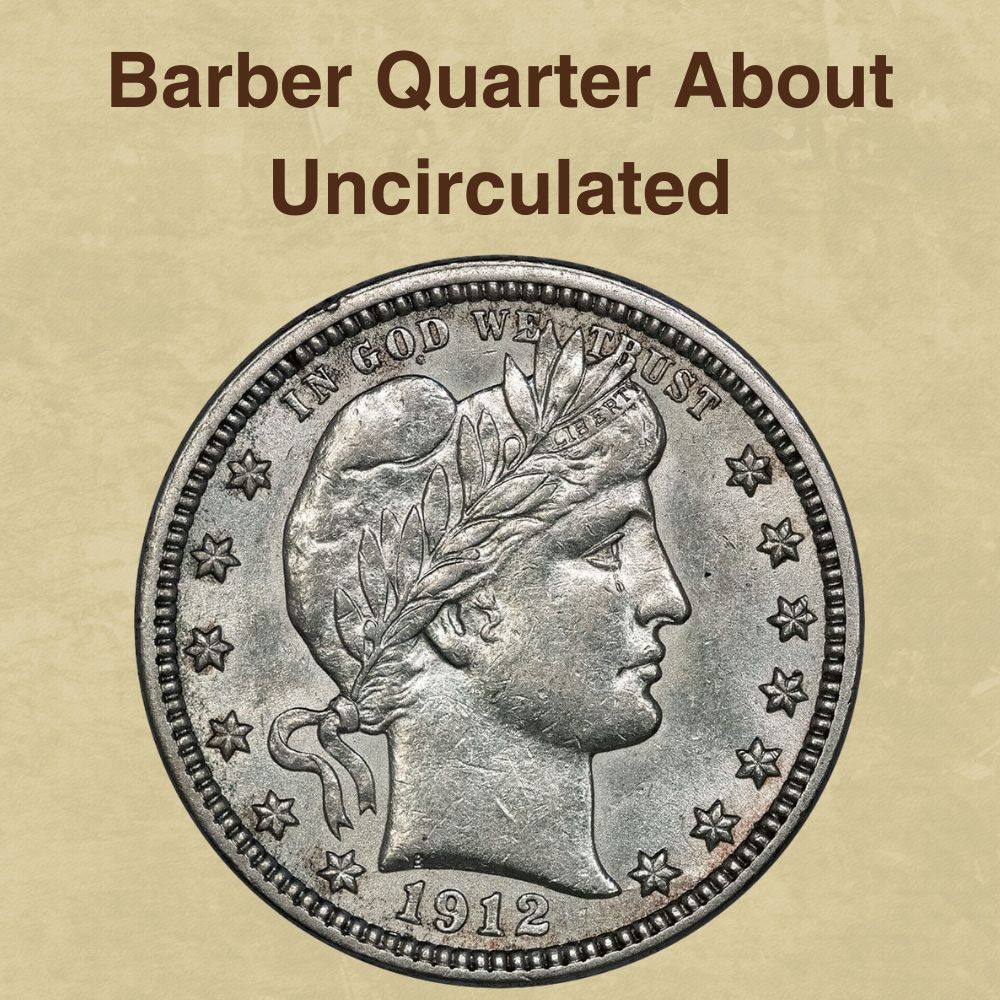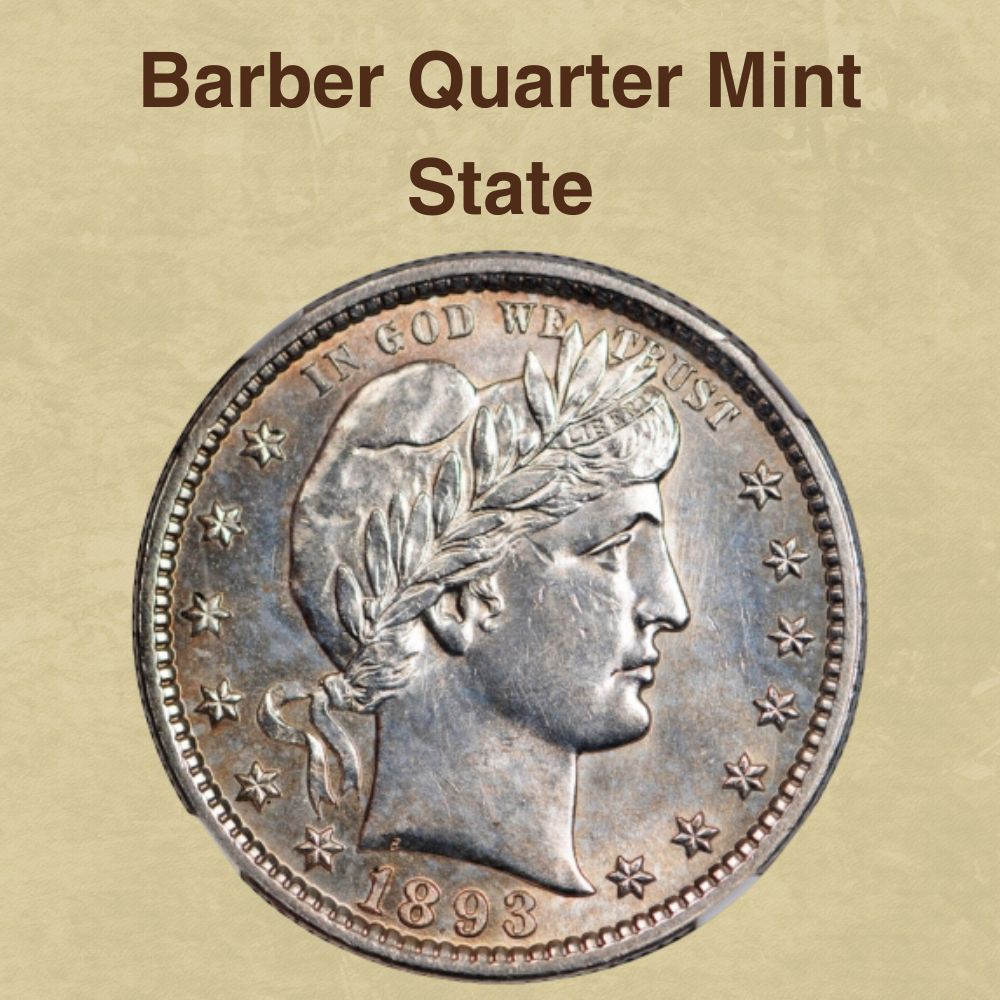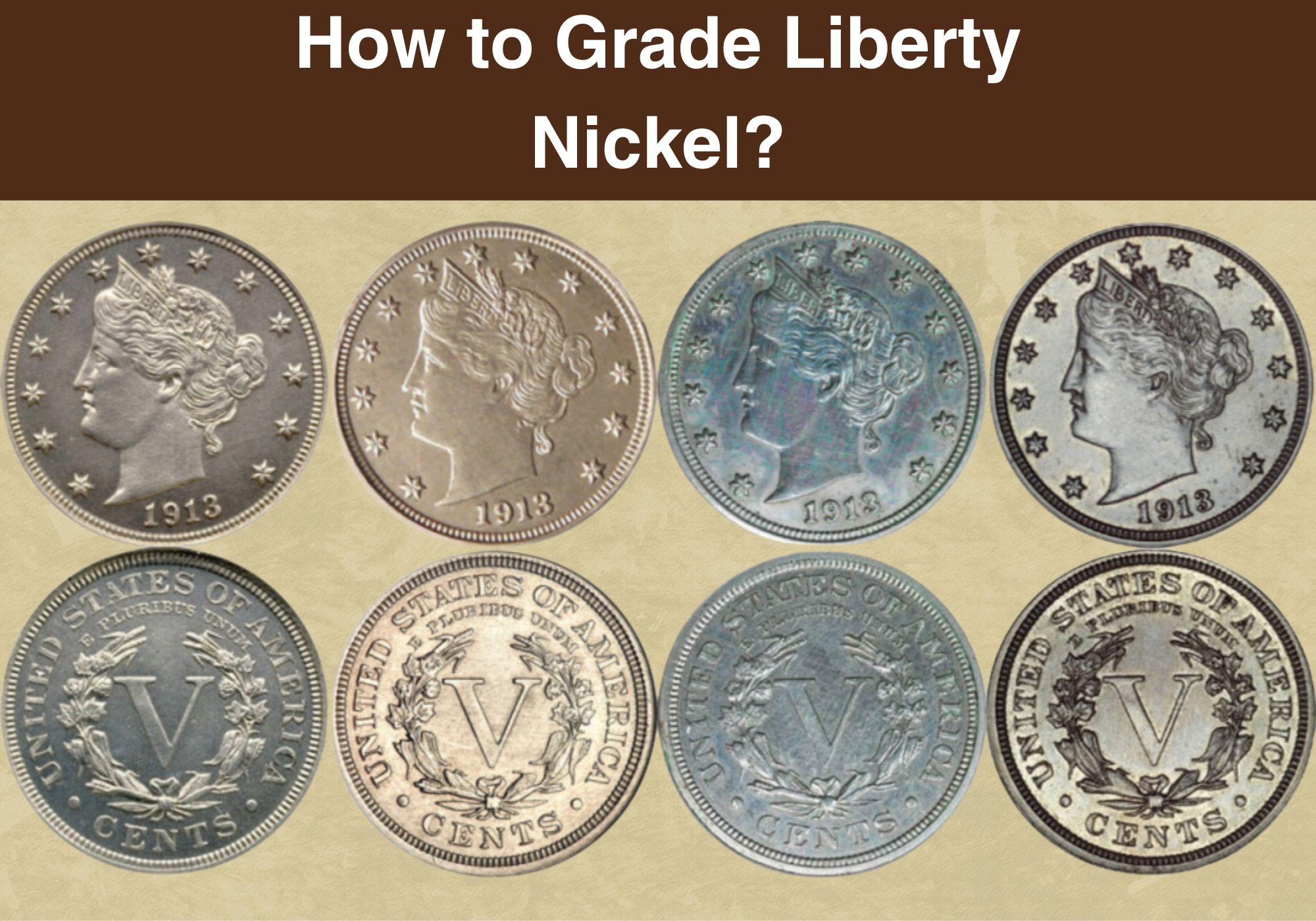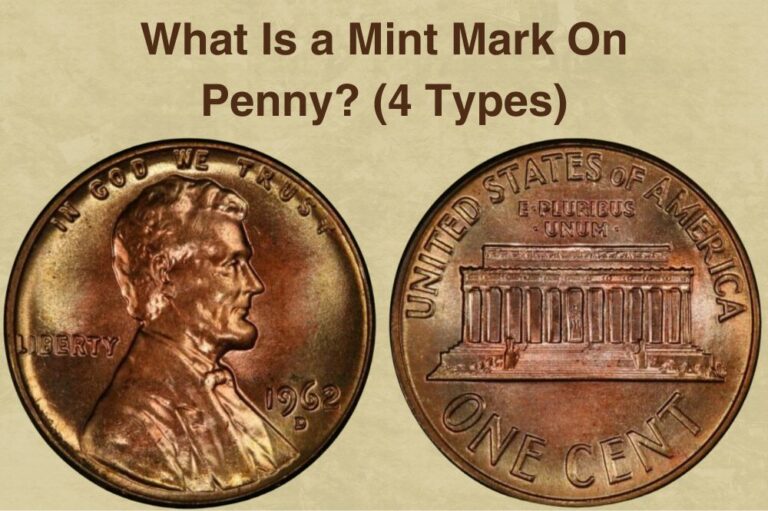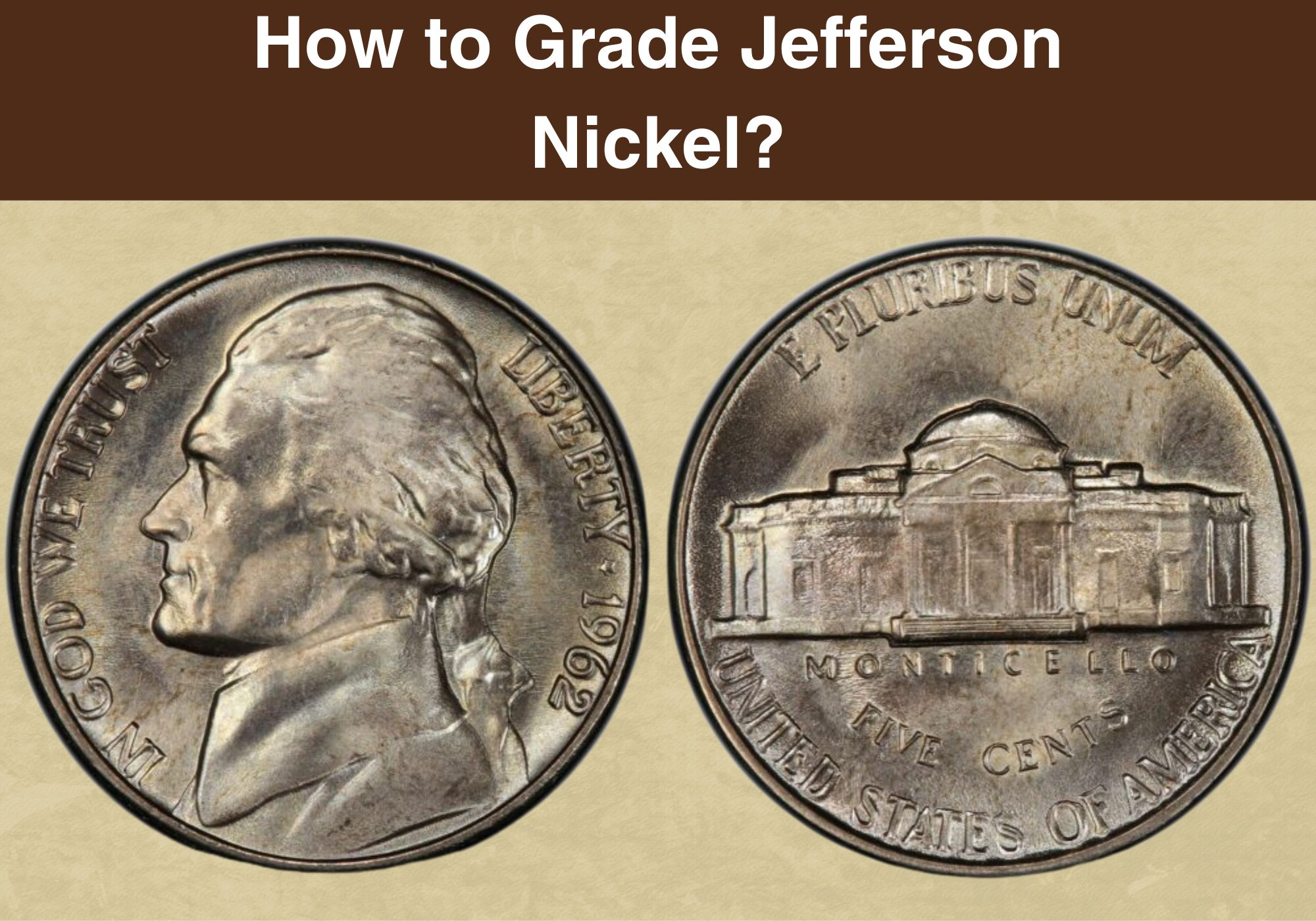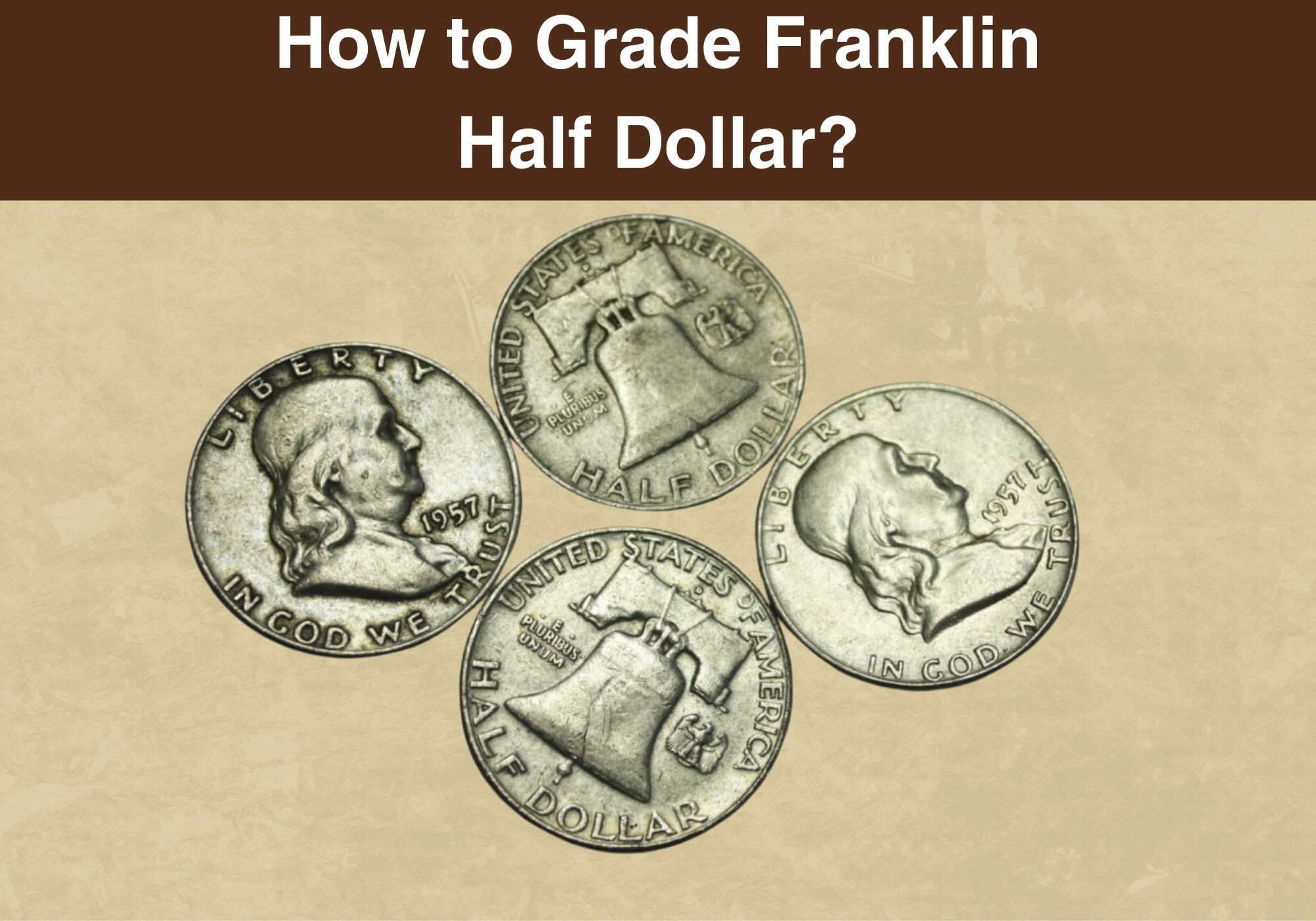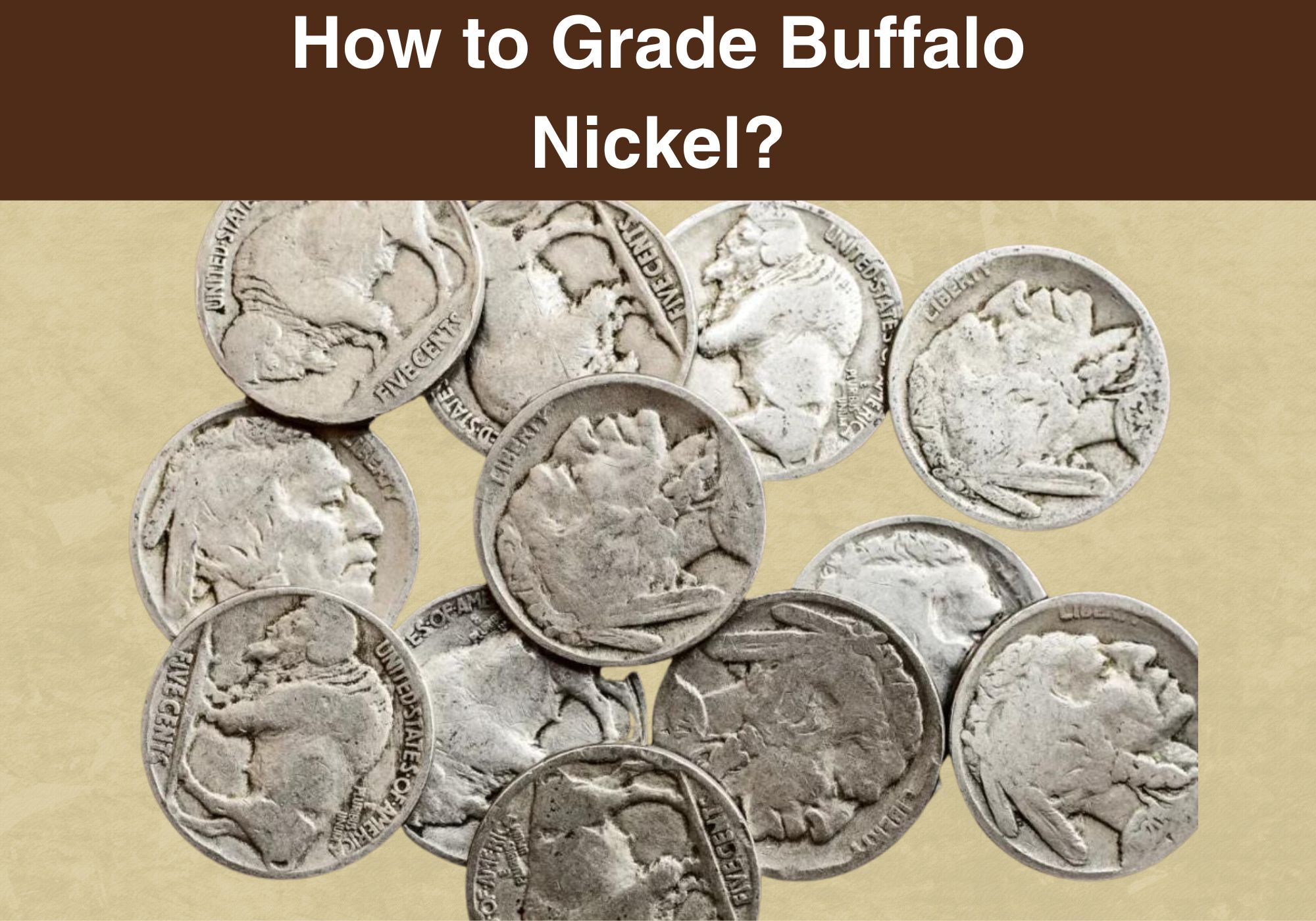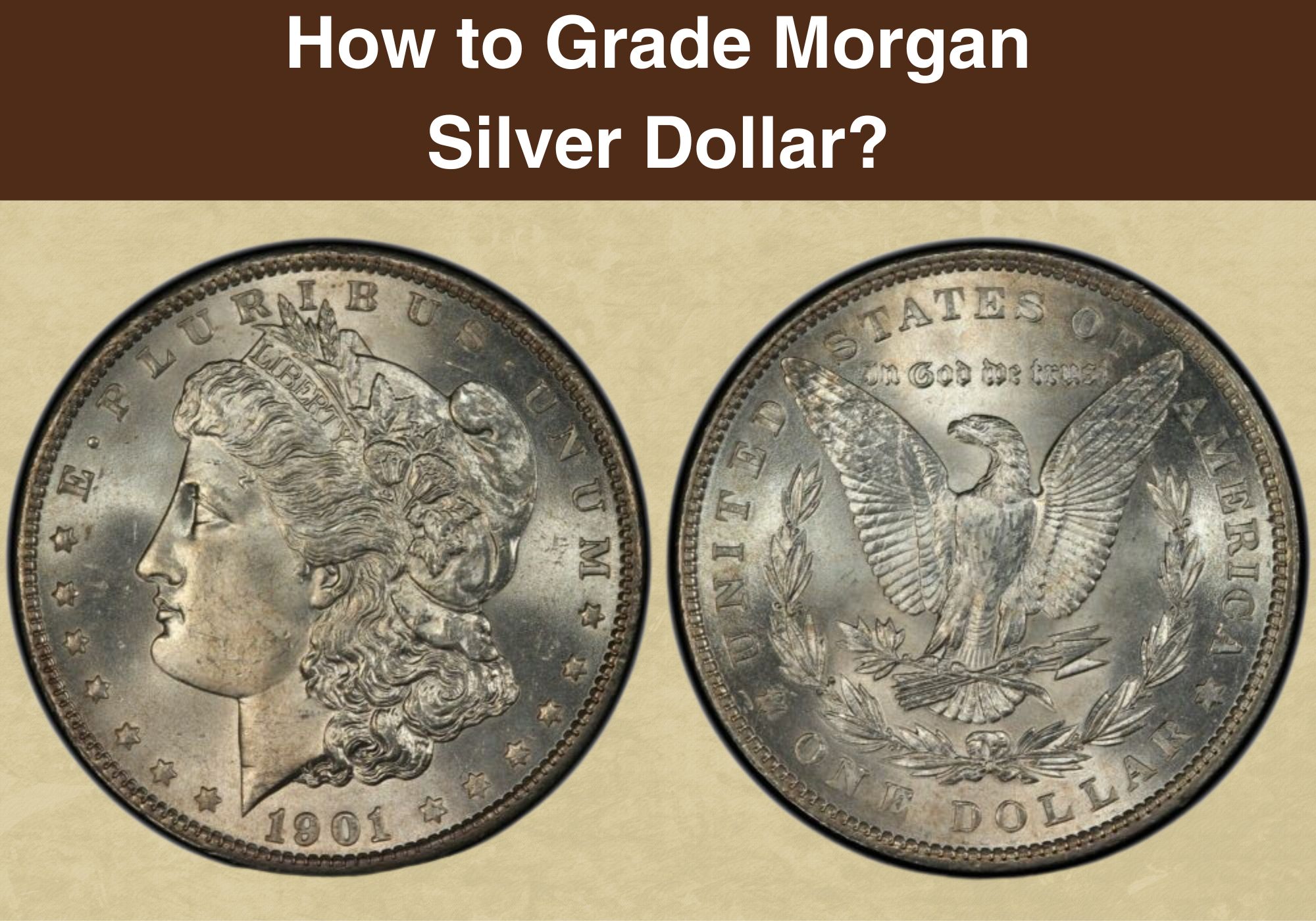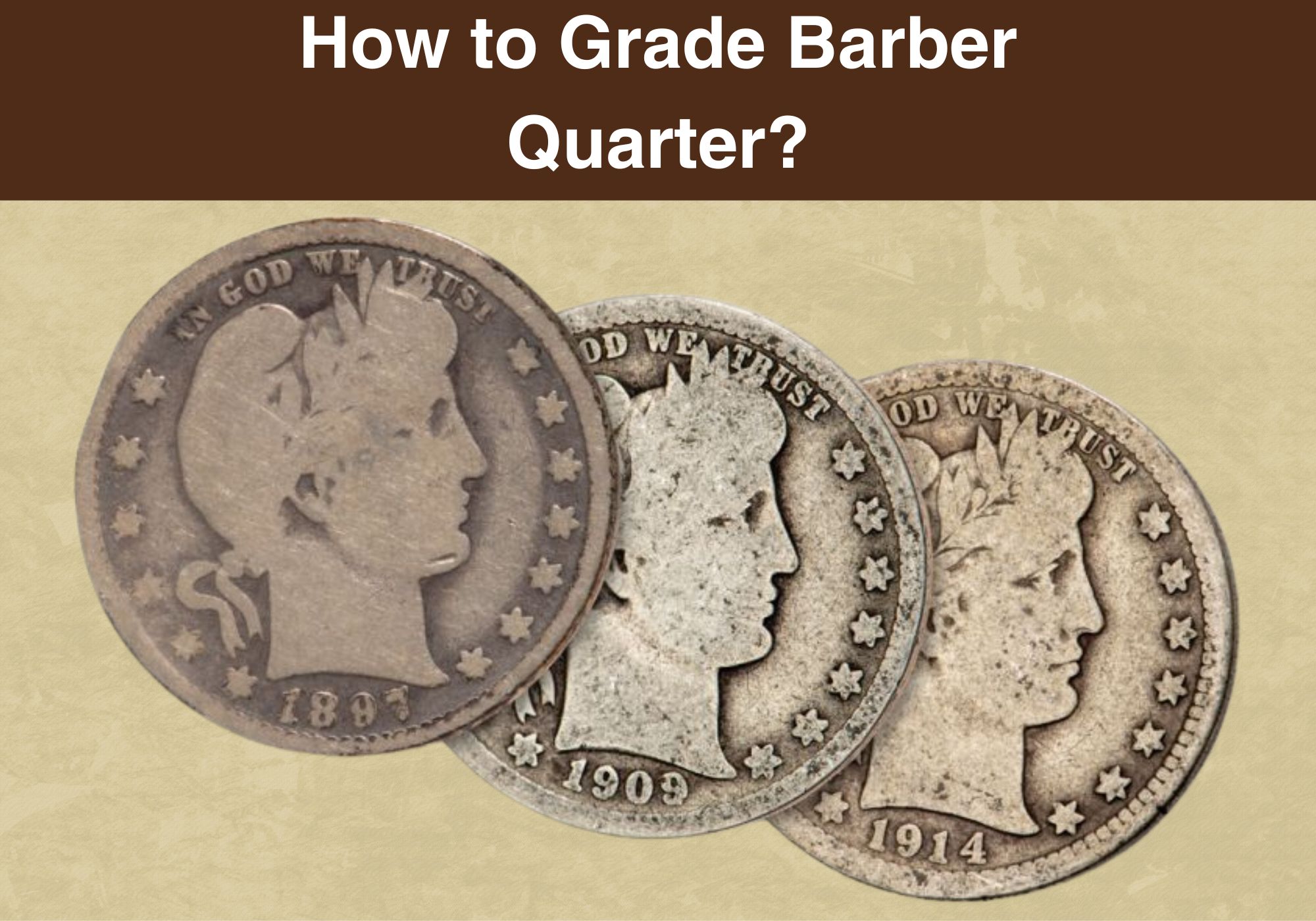
Coin Value Contents Table
The US Mint produced twenty-five-cent coins for over 200 years, and Barber quarters, minted between 1892 and 1916, are part of this coinage. Despite a short minting period, these quarters are often inexpensive.
Remember that their prices can sometimes be lower than the value of quarters produced later, particularly concerning pieces in poor condition. Therefore, finding a way how to grade Barber quarters the most accurately is often decisive.
Grading Standards
Grading is the process of the coins’ condition evaluation, primarily for its value determination purposes. The usual criteria in this process are attractiveness, preservation, strike, color, and luster.
Numismatist Dr. W. H. Sheldon presented his scale in 1949. The 1 to 70 scale created for grading large US coins was accepted for grading all US coinage after certain modifications in the 1970s.
Sheldon’s grading scale is based on a quantitative method, meaning the better the coins’ condition is, the higher its grade is. The grading process considers their obverse, reverse, and rim. These three sides are not necessarily the same grade and can, by individual conditions, influence the overall specimens’ rating.
Understanding Grades for Barber Quarter
The Barber quarters are interesting coins with rich designs on both sides, minted for only 20 years. They have been in circulation for a long time, making it hard to find specimens in uncirculated condition and high grade.
Barber quarter |
|
| Face value | Twenty-five cents ($0.25) |
| Compound | Silver (90%) |
| Coin weight | 0.200 troy ounces (6.25 g) |
| Silver weight | 0.181 troy oz (5.625 g) |
| Coin diameter | 0.957 inches (24.30 mm) |
| Coin thickness | 0.069 inches (1.75 mm) |
The circulated Barber quarters go from grade AG 3 to AU 58. The highest known rank for this coin type in the uncirculated condition is MS 65.
Crucial aspects considered during the grading process are scratches, wear marks, strikes, errors, damages, and mint luster. Hairline scratches and contact marks are the most common factors that can downgrade the Barber quarters in the mint state.
How to Grade Barber Quarter?
Evaluating Barber quarters includes examining all the image details, the mint mark and date presence, and overall coin condition. The goal is to determine their value based on preservation levels. Let’s find the scheme to do that correctly.
1. About Good (AG)
The coins in this non-collectible grade have most of the design outlined and with plain elements. However, the rim is so worn out that it negatively affects the edge lettering design and stars.
Obverse
The Barber quarter obverse in this grade has more recognizable details than the reverse. The rim is plain, while the year is worn out but readable. Surrounding stars are flat, but the letterings along the lower rim are legible.
Reverse
This side wears out more than the obverse, and the rim is often entirely flattened. Only a small portion of lettering is present, while the outer lines of the eagle’s body and wings are missing.
2. Good (G)
In this grade, the Barber quarter design is mostly outlined. Some areas can be dull with missing design details. The coin rim should be entire but with slight wear signs on the stars or letters.
Obverse
You can expect Liberty’s portrait to be only outlined without many visible details. The exceptions are her ear and a slightly more defined eye area. The coin rim is usually complete.
Reverse
You can see a mild separation between the rim and the feathers on the eagle’s wings. A few wings’ details are visible, while the lettering is in some areas partially worn out. All elements are still very flat.
3. Very Good (VG, VG8, VG10)
The main design elements are clear. However, such coins still show significant levels of wear and tear, especially on the most prominent spots.
Obverse
The entire Liberty profile is weak, and the design is smooth. The rim is sharper with a clearly defined inside border. However, you can notice some facial features in the nose and lips area and hair wreath details.
The lettering and stars are complete and bold. On the other hand, only three letters are visible in LIBERTY.
Reverse
There is a small amount of detail on the eagle. The arrows are still flat, and most of the shield looks weak. However, a part of the eagle’s eye is visible. Some letters of E PLURIBUS UNUM are noticeable.
4. Fine (F, F12, F15)
Frequently used in circulation, coins in this grade show signs of wear on the raised design parts.
Obverse
Coins graded this way show details in the hair and facial features. All LIBERTY letters are weak but visible, and the rim is full. You can also see details on the wreath leaves and Lady Liberty’s mouth.
Reverse
Expectedly, there are more details in such graded quarters than in lower-ranking ones. The feathers have more visible elements, and the shield shows some details.
The letters on the legend are visible but incomplete. You can also see more noticeable details on the feathers, arrows, and letterings. The rim and stars are stronger and more defined.
5. Very Fine (VF, VF20, VF25, VF30, VF35)
Most coins have average design details with sharply recognizable letters and digits, but the level of their visibility depends on the subgrade. In any case, you can notice signs of wear on the top points.
Obverse
Such coins have almost half of the details on the wreath leaves visible. Lady Liberty’s hair and ribbon are shabby but visible.
Slightly better-preserved quarters show her jawline more defined, while the curl of hair behind her ear is more visible in this grade. The LIBERTY word looks weak but is complete.
Reverse
Half of the wings’ features and lines on the shield are visible in this coin rank, while the motto is easily readable. The reverse in specimens graded VF 30 and VF 35 shows more feathers on the eagle’s head.
6. Extra Fine (EF40, EF45)
The coins in Extremely Fine grade are slightly worn out on the highest design points. The original minting luster is partially visible.
Obverse
Lady Liberty’s face and hair features are entirely present, and you can notice more details on her hair at the back of her head.
The Phrygian cap she wears is well-defined. In EF 45, the signs of wear are visible only on the high design points, and such preserved coins are shinier.
Reverse
In this case, you can recognize approximately 80% of the wings and shield details depicted on the reverse side. The letters on the band are all present and fully visible. In this grade, the quarter’s reverse side design is bolder and more defined.
7. About Uncirculated (AU50, AU55, AU58)
Signs of wear are notable on less than 50% of the quarter’s design. At least half of the mint luster present means that the coin’s grade is surely AU.
Obverse
The Barber quarter in this grade has the obverse with more details in hair. Lady Liberty’s portrait is sharp, shows more shine, and has more defined cheek and eyebrow lines.
Reverse
This coin side shows light wear and tear on the highest points, including the eagle’s neck and wings. Tail feathers are visible, well-defined, and with more luster than in poorer-ranked coins. The best quarters in this grade have completely defined tail feathers, bold arrows, and a clear and complete shield design.
8. Mint State (from MS 60 to MS 70)
Expectedly, the Barber quarters in the mint state are the most sought-after in the series. However, you should be aware of slight differences between pieces divided into ranks from MS 60 to MS 70.
MS 63 grade
The coins in the mint state 63 may have numerous minor marks. Their luster is complete but can be weakened. The tiny hair details are visible without a magnifying glass. Face features around the Liberty’s nose and lips are clear and bold.
Slight wear marks can be present in the higher relief areas, while central elements on the reverse are bold. Plenty of small details are effortlessly visible on the eagle, and feathers are almost completely preserved.
MS 64 grade
The coin in this grade has average shine with several minor contact marks and a few medium ones. Some imperfections, like slight marks and scratches on the high points, can be visible, but they are almost always negligible. The obverse is shiny and features a complete design.
MS 65 grade
These quarters are of a high quality and luster, while the design is sharp. Minimal contact marks can be present, as well as one or two patches in the hair that are invisible to the naked eye.
These coins’ overall quality is above average, with all portrait features distinct and strongly struck. The complete reverse design is featured with all the details and with barely visible scratches or marks. A good strike quality is the first thing you can notice on this coin’s reverse.
Summary
The circulated Barber quarters grading is more effortless than those in the mint state because they wear evenly due to their symmetrical design.
Remember that grading superb quarters requires more than counting contact marks and scratches in the high points. It also depends on each coin’s appeal, often making the evaluation process subjective.

